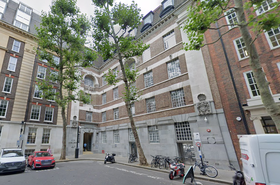The UK is aiming to become a global leader in artificial intelligence, with large amounts of public and private investment now going into AI R&D. But there is an important question that often gets overlooked. How can the UK expand AI successfully without first making sure its digital infrastructure is environmentally feasible?
This issue is already starting to make headlines. Amazon’s plans to build a new data center campus in the UK have raised fresh concerns about grid pressure and energy use. One facility alone could consume as much power as an entire town like Burnley.
At the same time, research from the London School of Economics and the Grantham Institute recently discovered that AI could help reduce global carbon emissions by up to 5.4 billion tonnes by 2035. While the potential is exciting, there is an obvious challenge. AI needs more computing power, which means more energy. So the data center industry must play a central role in helping to meet climate goals while supporting digital progress.
The need for clean growth
The UK is not the only country trying to enhance its AI capabilities. Other governments across Europe and the Middle East are also making substantial investments in AI R&D. A lot of them are facing similar problems, such as increasing pressure on local energy grids, stricter environmental regulations, and limited land and power availability in key regions.
In EMEA, regulations like the Corporate Sustainability Reporting Directive (CSRD) are raising the threshold for carbon reporting and transparency. At the same time, the EU Taxonomy is making it harder for infrastructure projects to attract investment unless they meet rigid sustainability standards. That means operators need to think beyond simple energy savings.
Building sustainable data centers should not be tasked to a single department. It requires collaborative effort from operations, engineering, compliance, policy, and leadership teams. Every stage of the lifecycle, right from choosing a site to powering it to maintaining it, can help lower emissions over the long term. Without this integrated approach, progress will remain slow and scattered.
It is also time to accept that efficiency alone is not enough. As AI grows, so will the energy it needs. Operators must look at the full picture. That includes using renewable power, designing buildings that reuse materials, and carefully tracking both direct and indirect emissions.
Grid pressure and planning delays
There are already serious delays in getting the infrastructure needed to support large-scale AI in the UK. Grid capacity is tight in high-demand areas like London and the South East. In some cases, new power connections might not be available for ten years or more.
These delays are holding back the UK’s capacity to grow domestic computing power. If the situation continues, the country could end up importing computing power from abroad. This would jeopardize control over digital services and shift environmental impacts elsewhere. It would also be a missed opportunity to lead on both innovation and sustainability.
The UK is not alone. The Netherlands and Ireland have faced similar issues. In both countries, local concerns and limited energy supply have caused delays or restrictions on new data center builds. Without better coordination and investment across borders, countries across EMEA may struggle to keep pace.
Funding alone is not enough
While it is important to support AI research, infrastructure must be treated as just as important. That means investing in faster grid connections, modernizing old facilities, and manufacturing in places that are currently underserved.
Planning policies also need to reinforce the faster development of modern and efficient sites. At the same time, the government needs to give clear guidance on how increased computing fits into the UK’s national carbon targets. If not, AI growth could end up working against climate commitments instead of supporting them.
Solving both complexity and carbon in parallel
Today’s data center operators are under pressure from both sides. On one hand, they are dealing with more complex and demanding digital workloads. On the other hand, they are expected to cut emissions. Many are trying new approaches, such as modular construction, better cooling, and renewable energy. But legacy systems and inconsistent reporting still hinder sector growth.
To move forward, operators need better data, clear reporting, and shared benchmarks. The industry should work together more closely to share best practices and improve standards for measuring carbon impact during both construction and operation.
A chance to lead
Right now, the UK data center industry is at the cusp of a breakthrough. We need to identify the right balance between the fast growth of AI but also the growing need to reduce environmental impact. This poses a golden opportunity – with the right support and coordination, the UK can build infrastructure that is both scalable and sustainable.
The Government should treat data centers as part of national strategic planning. That includes working closely with industry, energy providers, and local communities. Taking this whole-system view will help the UK stay competitive in AI while keeping climate goals in the forefront.
Across the wider EMEA region, we believe that shared challenges require shared action. By working together, we can avoid fragmented efforts and instead create stronger, more resilient infrastructure. This is not just a challenge for one country or one sector – it is a mutual responsibility, and a chance to lead the way.
Read the orginal article: https://www.datacenterdynamics.com/en/opinions/the-uks-ai-ambitions-demand-a-decarbonized-data-center-strategy/





